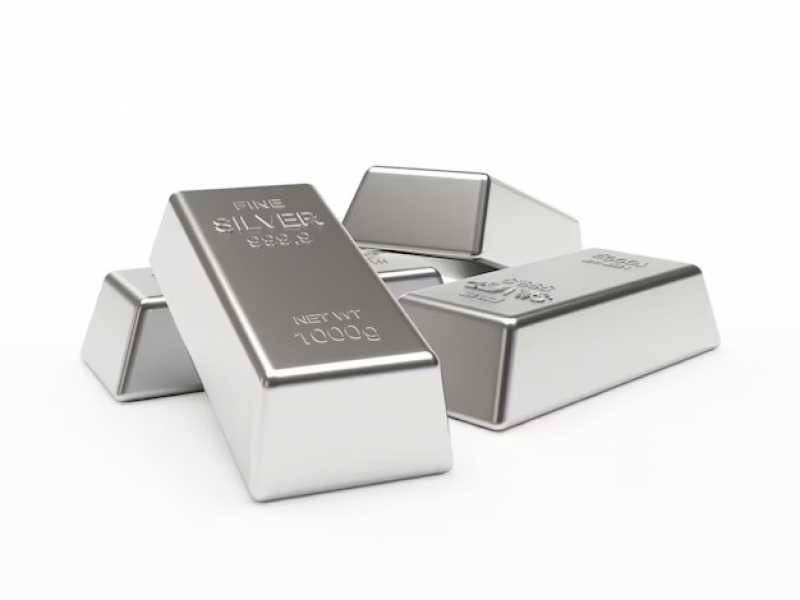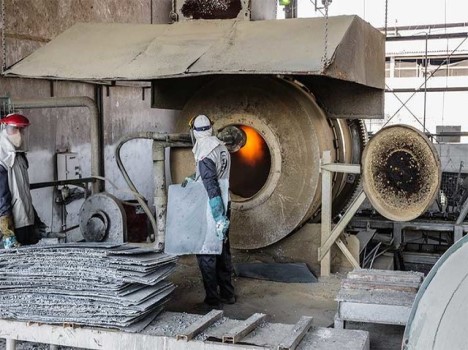What is a Zinc Ingot?
Zinc has been used for centuries.
The existence of brass artifacts dating back 1,000 to 1,400 years is clear evidence of its historical use. One of the main products derived from zinc is the zinc ingot.
Zinc ingots are among the most valuable and widely sold zinc products. They are produced through several stages, including zinc ore extraction, zinc concentrate processing, storage, sampling, zinc solution production, and finally, zinc ingot casting.
Zinc Ingot
Zinc ingots are formed through the crystallization of zinc into a hexagonal close-packed (HCP) crystal structure and by solidifying molten zinc in special molds.
Zinc, with the atomic number 30 and the chemical symbol Zn, belongs to Group 12 of the periodic table. It is a brittle metal with a silvery-blue appearance, resembling the first element in its group — magnesium.
Zinc is abundantly found in the Earth’s crust and is the fourth most used metal in the world after iron, aluminum, and copper. It has a wide range of industrial and biological applications.
Zinc ingots are suitable for a wide range of applications, with one of the most important being the improvement of corrosion resistance.
In fact, a large portion of zinc ingots produced are used in the galvanization process. This process creates a protective, anti-corrosion coating on steel products, significantly enhancing their resistance to rust and degradation over time.
Properties of Zinc Ingots
Due to its functional properties—such as reactivity with iron, corrosion resistance, electrochemical behavior, low melting point, strength, alloying capability, malleability, and high tensile strength—zinc has found a wide range of industrial applications.
When zinc is alloyed with 4% aluminum, its yield strength and hardness significantly increase.
Below, we will explore some of these key characteristics in mor

Strength and Durability
Zinc is a low-strength metal with elasticity less than half that of mild carbon steel.
Zinc ingots are typically used in load-bearing applications. However, inexpensive mechanical parts can also be cast from zinc.
Hardness
Pure zinc has low hardness and is brittle in most cases. However, zinc alloys are exceptionally tougher and more impact-resistant compared to other casting alloys.
Malleability
Zinc becomes malleable and ductile within the temperature range of 212°F to 302°F (100°C to 150°C), but returns to its brittle state when the temperature increases further.
Reactivity
Zinc possesses strong electrochemical properties and performs well in alkaline batteries and during the galvanization process.
Zinc ingots have strong anti-corrosion properties and combine well with other metals.
Applications of Zinc Ingots
More than half of the total annual zinc ingot production is used in the galvanization process to protect steel from corrosion.
Zinc ingots are also used to produce casting alloys and have applications in construction and civil engineering projects.
Zinc ingots can be rolled to produce zinc sheets or plates.
These sheets are used in manufacturing roof drainage systems and as cladding for buildings.
Zinc is also used in the production of alloys such as brass, silver, and nickel.
It is widely employed in casting molds and the automotive industry.
A large portion of these products are used in galvanizing steel, roofing sheets, storage tanks, and other applications.
Galvanized sheets are also used as air ducts in HVAC systems, ventilation, and heating systems.
Zinc ingots are additionally utilized in the production of chemicals and oxides.
Advantages of Using Zinc Ingots
- A type of commercial alloy with low melting cost and minimal metal wastage.
- Its insensitivity to different cooling rates allows it to be cast using various processes.
- The excellent castability of zinc ingots enables the production of thin sections and intricate details in components.
- Low shrinkage and reduced gas porosity
- Excellent finishability
- Very good corrosion resistance
- Excellent machinability
Zinc Ingot Production Process
In the initial stages, zinc-containing ores and minerals such as sphalerite are crushed and ground.
If these ores contain lead, they must first undergo a lead removal process.
Then, the materials are leached in stainless steel tanks using sulfuric acid and water.
Through various chemical processes, zinc sulfate is obtained. During this stage, the metal slowly reacts with the acids.
Other metals such as nickel, cadmium, cobalt, iron, and others are also present in the resulting solution.
Before the electrolysis process, interfering ions must be removed.
Once the removal of these unwanted ions is completed, the process proceeds to the separation of zinc metal.

Summary
As mentioned, due to zinc’s excellent corrosion resistance, the majority of zinc ingots are used in the galvanization process.
Additionally, other functional properties such as low melting point, strength, alloying capability, malleability, and high tensile strength have contributed to the diverse applications of zinc ingots.
